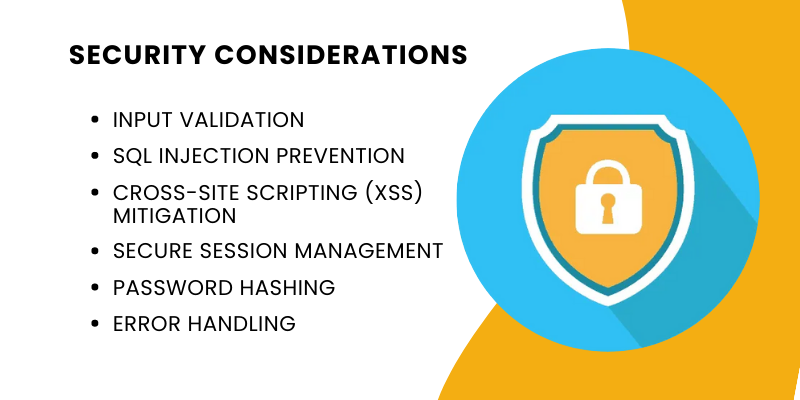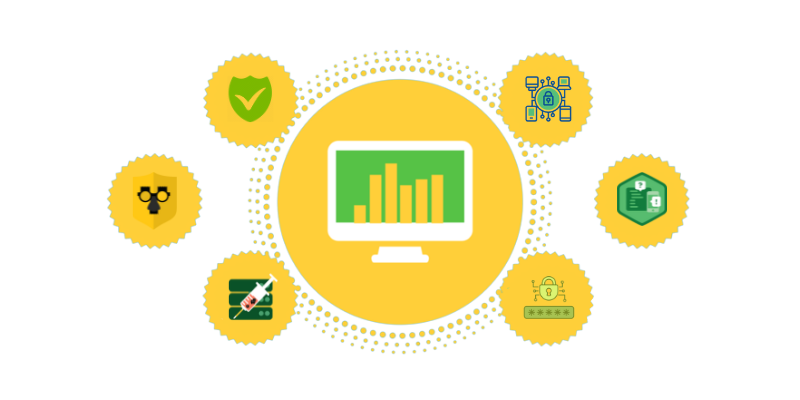
In today’s interconnected world, web development plays a crucial role in creating dynamic and interactive websites. PHP, known as Hypertext Preprocessor, has emerged as one of the most well-liked languages for server-side scripting in web development. Its versatility, ease of use, and powerful features make it a preferred choice among developers worldwide. The purpose of this blog article is to introduce PHP and highlight its significance in creating secure and reliable web applications.
Understanding PHP
PHP is an open-source, general-purpose scripting language specifically designed for web development. It can be used either independently or as HTML code. scripting language. PHP’s syntax is similar to C and Perl, making it somewhat simple for developers to learn with a background in these languages. The vast community support and extensive documentation available make PHP a developer-friendly language.
Join PHP Training in Chennai and start learning about server-side programming with PHP from the basics.
Features of PHP

A popular server-side scripting language is PHP (Hypertext Preprocessor) designed for web development. It offers a range of features that make it a popular choice among developers. Let’s go through each feature of PHP scripts one by one:
- Easy to Learn: PHP has a simple and intuitive syntax, making it relatively easy to learn for beginners. Its syntax is similar to C, Java, and other popular programming languages, making it accessible for developers who are familiar with those languages.
- Cross-platform Compatibility: PHP is a cross-platform language, that is, it may run on a variety of operating systems, includingWindows, macOS, Linux, and UNIX. This flexibility allows developers to work on different environments without major modifications.
- Server-side Scripting: PHP is primarily used for server-side scripting, which means it is before the HTML is transmitted to the client, the server must be the client’s browser. This enables dynamic web page generation, database interaction, and other server-side functionalities.
- Extensive Database Support: PHP provides extensive support for interacting with databases. It has built-in extensions and libraries for connecting to popular databases like MySQL, PostgreSQL, Oracle, and more. This allows developers to easily retrieve, insert, update, and delete data from databases.
- Large Standard Library: PHP comes with a huge standard library offering a variety of functions and modules. These pre-built functions facilitate tasks such as file manipulation, string processing, mathematical operations, image manipulation, and more, saving development time and effort.
- Frameworks and CMS Support: PHP has a thriving ecosystem of frameworks and content management systems (CMS) such as Laravel, Symfony, CodeIgniter, WordPress, Drupal, and Joomla. These frameworks and CMSs provide structured approaches to web development, offering additional features and tools to expedite the development process.
- Scalability: PHP scripts are highly scalable, allowing developers to build and manage applications of various sizes and complexities. It can handle high-traffic websites and applications without significant performance issues. Additionally, PHP’s modular architecture and support for various caching mechanisms contribute to scalability.
- Web Server Integration: PHP is designed to seamlessly integrate with web servers such as Apache, Nginx, and Microsoft IIS. It can be easily configured to work with these servers, ensuring efficient processing of PHP scripts and delivering dynamic web content to users.
- Community and Resources: PHP has a vast and vibrant developer community that participates in its growth and provides support through online forums, documentation, and tutorials. This vibrant community ensures that developers have access to a wealth of resources and assistance when using PHP.
- Security Features: PHP offers various security features to help developers build secure applications. It includes measures to prevent common web vulnerabilities such as SQL injection, cross-site scripting (XSS), and cross-site request forgery (CSRF). By following best practices and using secure coding techniques, PHP applications can be safeguarded against potential threats.
These features collectively make PHP a versatile and powerful language for web development, enabling developers to create dynamic and interactive web applications efficiently.
Enrol for Java Course in Pondicherry and learn Java from basics without experienced trainers with real-time projects.
Security Considerations

Security considerations are crucial when developing applications with PHP to protect against potential vulnerabilities and attacks. Here are some key security considerations to keep in mind:
- Input Validation: Always validate and sanitize user input to prevent malicious data from being processed by the application. Use filtering and validation functions to ensure that user-supplied data meets expected criteria, such as input length, data type, and format.
- SQL Injection Prevention: To avoid SQL injection attacks, use prepared statements or parameterised queries instead of directly concatenating user input into SQL queries. This helps prevent attackers from manipulating SQL queries to gain unauthorised access to databases.
- Cross-Site Scripting (XSS) Mitigation: Protect against XSS attacks by properly sanitizing and escaping user-generated content before displaying it on web pages. Use functions like `htmlspecialchars` to encode special characters and prevent them from being interpreted as HTML or JavaScript.
- Cross-Site Request Forgery (CSRF) Prevention: Implement CSRF tokens in forms and requests to ensure that requests originated from within your application. These tokens are unique for each user session and help prevent attackers from tricking users into performing unintended actions.
- Secure Session Management: Use secure session management techniques to prevent session hijacking and session fixation attacks. Ensure that session IDs are securely generated, stored, and transmitted. Use session_regenerate_id() to regenerate session IDs periodically or after authentication.
- Password Hashing: When storing user passwords, always use secure password hashing algorithms, such as bcrypt or Argon2. Avoid using weak hashing methods like MD5 or SHA1, as they are susceptible to brute-force attacks. Additionally, consider using password hashing functions like `password_hash` and `password_verify` provided by PHP.
- File Uploads: Carefully validate and handle file uploads to prevent malicious files from being executed on the server. Ensure that file uploads are stored outside the web root directory or in a directory with restricted access. Additionally, enforce file type and size restrictions and perform server-side validation of uploaded files.
- Secure Configuration: Keep PHP and other server programmer that have received the most recent security updates and versions. Disable unnecessary PHP extensions and functions that are not required by your application. Set appropriate file and directory permissions to restrict unauthorized access.
- Error Handling: Implement proper error handling and logging mechanisms to avoid exposing sensitive information to potential attackers. Displaying detailed error messages can reveal valuable information about the system and aid attackers in finding vulnerabilities.
- Secure File Handling: When dealing with file operations, sanitize file names, validate file types, and avoid user-controlled paths to prevent directory traversal attacks. Use secure file handling functions provided by PHP, such as `move_uploaded_file` for uploaded files.
- Authentication and Authorization: Implement secure authentication mechanisms to protect user accounts. Use strong password policies, implement account lockouts after multiple failed login attempts, and consider implementing multi-factor authentication for added security.
- Regular Security Audits: Regularly audit and test the security of your PHP application using tools like vulnerability scanners, penetration testing, and code reviews. Stay updated with security best practices and keep an eye on security advisories and patches related to php security and its dependencies.
By addressing these security considerations and following secure coding practices, you can help protect your PHP applications from common security vulnerabilities and Make sure your systems and data are available, honest, and confidential.
Reliability and Performance

PHP’s mature ecosystem, extensive community support, and continuous updates contribute to its reliability and performance. Regular updates address security vulnerabilities and improve overall language efficiency. Furthermore, PHP’s caching mechanisms, such as OPcache and Memcached, significantly enhance web application performance by reducing response times and server load.
Learn web development with PHP, and understand the server-side aspects of PHP by joining PHP Training in Bangalore.
Best Practices
Security considerations are crucial when developing applications with PHP to protect against potential vulnerabilities and attacks. Here are some key security considerations to keep in mind:
- Input Validation: Always validate and sanitise user input to prevent malicious data from being processed by the application. Use filtering and validation functions to ensure that user-supplied data meets expected criteria, such as input length, data type, and format.
- SQL Injection Prevention: To avoid SQL injection attacks, use prepared statements or parameterised queries instead of directly concatenating user input into SQL queries. This helps prevent attackers from manipulating SQL queries to gain unauthorised access to databases.
- Cross-Site Scripting (XSS) Mitigation: Protect against XSS attacks by properly sanitising and escaping user-generated content before displaying it on web pages. Use functions like `htmlspecialchars` to encode special characters and prevent them from being interpreted as HTML or JavaScript.
- Cross-Site Request Forgery (CSRF) Prevention: Implement CSRF tokens in forms and requests to ensure that requests originated from within your application. These tokens are unique for each user session and help prevent attackers from tricking users into performing unintended actions.
- Secure Session Management: Use secure session management techniques to prevent session hijacking and session fixation attacks. Ensure that session IDs are securely generated, stored, and transmitted. Use session_regenerate_id() to regenerate session IDs periodically or after authentication.
- Password Hashing: When storing user passwords, always use secure password hashing algorithms, such as bcrypt or Argon2. Avoid using weak hashing methods like MD5 or SHA1, as they are susceptible to brute-force attacks. Additionally, consider using password hashing functions like `password_hash` and `password_verify` provided by PHP.
- File Uploads: Carefully validate and handle file uploads to prevent malicious files from being executed on the server. Ensure that file uploads are stored outside the web root directory or in a directory with restricted access. Additionally, enforce file type and size restrictions and perform server-side validation of uploaded files.
- Secure Configuration: Keep PHP security and other server programmes that have received the most recent security updates and versions. Disable unnecessary PHP extensions and functions that are not required by your application. Set appropriate file and directory permissions to restrict unauthorised access.
- Error Handling: Implement proper error handling and logging mechanisms to avoid exposing sensitive information to potential attackers. Displaying detailed error messages can reveal valuable information about the system and aid attackers in finding vulnerabilities.
- Secure File Handling: When dealing with file operations, sanitise file names, validate file types, and avoid user-controlled paths to prevent directory traversal attacks. Use secure file handling functions provided by PHP, such as `move_uploaded_file` for uploaded files.
- Authentication and Authorization: Implement secure authentication mechanisms to protect user accounts. Use strong password policies, implement account lockouts after multiple failed login attempts, and consider implementing multi-factor authentication for added security.
- Regular Security Audits: Regularly audit and test the security of your PHP application using tools like vulnerability scanners, penetration testing, and code reviews. Stay updated with security best practices and keep an eye on security advisories and patches related to PHP and its dependencies.
Wanna learn Java from the basics? Join Java Training in Coimbatore and start learning Java from the basics.
By addressing these security considerations and following secure coding practices, you can help protect your php security applications from common security vulnerabilities and Ensure the privacy, accuracy, and accessibility of your systems and data.
PHP’s versatility, extensive features, and robust community support make it a powerful tool for secure and reliable web development. By adhering to security best practices, developers can leverage PHP’s capabilities to create dynamic and interactive web applications while safeguarding against common vulnerabilities. Embracing PHP empowers developers to build efficient, scalable, and secure web solutions, making it a language worth exploring for any aspiring web developer.
